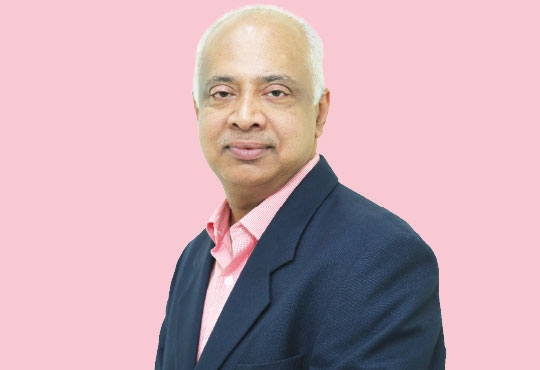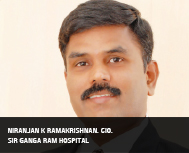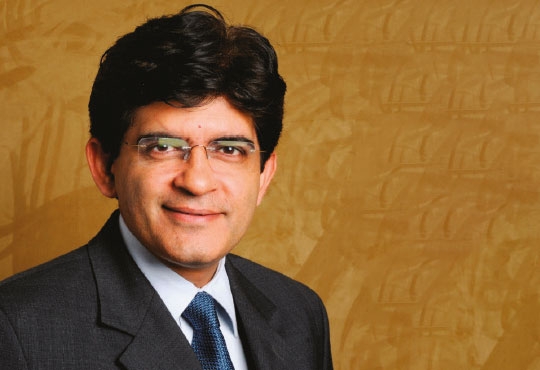
CIOTechOutlook >> Magazine >> December - 2016 issue
ERP in Healthcare - Impact of Cloud & IoT?
 With nearly 15 years of IT experience specialised in Healthcare Technology, Niranjan has managed several large projects in IT and ITES segment. Building expertise around Healthcare Information System, Healthcare Consulting & Management, Program Management, Requirements Analysis and software project management, Nirajan is presently working as CIO at Sir Ganga Ram Hospital.
With nearly 15 years of IT experience specialised in Healthcare Technology, Niranjan has managed several large projects in IT and ITES segment. Building expertise around Healthcare Information System, Healthcare Consulting & Management, Program Management, Requirements Analysis and software project management, Nirajan is presently working as CIO at Sir Ganga Ram Hospital.As a follow up of the earlier article flipside of the innovations, to demonstrate the real value of the investment for adopting the innovations, it is imperative to build a bridge between Enterprise Resource Planning (ERP) solutions and Mobility / IoT innovations.
ERP in Healthcare:
• ERP is responsible for integrating all the systems within the hospital through a seamless workflow solution thus enabling all the stakeholders to have a quick access to the clinical, financial, human resources, inventory and administrative data across the hospital.
• Generally, ERP sytems has a multi-faceted approach by combining different business functional areas with an integrated database to store various parts of a hospital and increases standardization and reporting capacities using a single and unified platform.
• ERP systems enable the top management of the hospital to gain greater control over planning, budgeting, monitoring and deciding the performance of the resources to improve the patient satisfaction.
Challenges in Healthcare ERPs:
• Cost of branded ERPs are quite expensive.
• Cost and complexity of maintaining the ERP in the hospital environment is too high.
• Due to the high attrition rate, there are always need for continuous training of new employees.
• Majority of the hospitals are using less then 30 percent capabilities of the overall ERP’s value.
• Time taken for meaningful implementation is too high which results scope creep and cost escalatioion for the ERP software firms.
• Lack of standards in Healthcare Industry results is every implementation with too much of customization requirement, an unique project and not as a box product.
• Integration of clinical information systems that captures the revenue information with ERP which primarily captures the expenses, needs to be as seamless as possible but majority of the organizations have a huge data integrity and mismatch issues.
• Data migration from one ERP system to a newer system is the most challenging task any IT adoption in a
hospital environment.
Impact of Mobility & IoT in ERP:
“From old school of thoughts where ERPs are meant to be within four walls of the organization as a stand-alone system, new generation ERPs has to be more flexible, data intelligent and real time information exchange – ready solution.”
In other perspective, “The real value of investment of Internet of Things may be realized when whatever the data that was collected from IoT and Mobile applications are fed to ERP for the business intelligent process to analyze and contribute for the future business growth of
the organization.”
• WMain objective of ERP as a business process management system of an organization is to connect systems of integrated applications that deal with raw data by automating various back office functions related to finance, inventory, technology, services and human resources.
• When the interval of acquired raw data becomes real time using Internet of Things & Mobility, the processed data becomes very useful information and creates very efficient processes.
• Sensors, wireless monitors and GPS devices fetching the real time utilization of various systems and relate them with the revenue generated in a ERP system.
• When the unstructured data collected from various devices are connected to the ERP’s structured business data for processing and analysing the business value for the organization.
• From midnight data synchronization of ERP, IoT and Mobility brought real-time access to the data possible that increases the speed and accuracy of the data for decision making.
• Presenting the right information to the patient, clinician, administrators and other stakeholders was the key objective of the ERP and with right adoption of IoT and Mobility integrated with ERP, the stakeholders may access the data on their own at appropriate time.
• Equipments downtime, misuse / unused equipment alerts, real time resource tracking, real time devices utilization in surgeries & procedures etc enables the outcome analysis of devices, cost analysis and overall performance managenent of the resources made possible with IoT data processed by ERP.
• By handshaking with Patient Portals, CRMs, Procurement portals, Online Payment solutions, Building Management systems, Complaints management system and other online applications directly with ERP, an intelligent workflow process would ensure that the Hospital really becomes a SMART Hospital.
• This would increase the efficiency, reduced the human resources requirement, improves productivity and strengthening the overal resource management.
CXO Insights
By Manoj Kumar Nambiar, Managing Director, Arohan Financial Services (P) Limited
Fortifying Resources through EAM - to Reinforce...
By Shyamala Jayaraman, Senior Vice President - ERP Solution, Ramco Systems
Private Cloud will Remain the Preferred Option...




